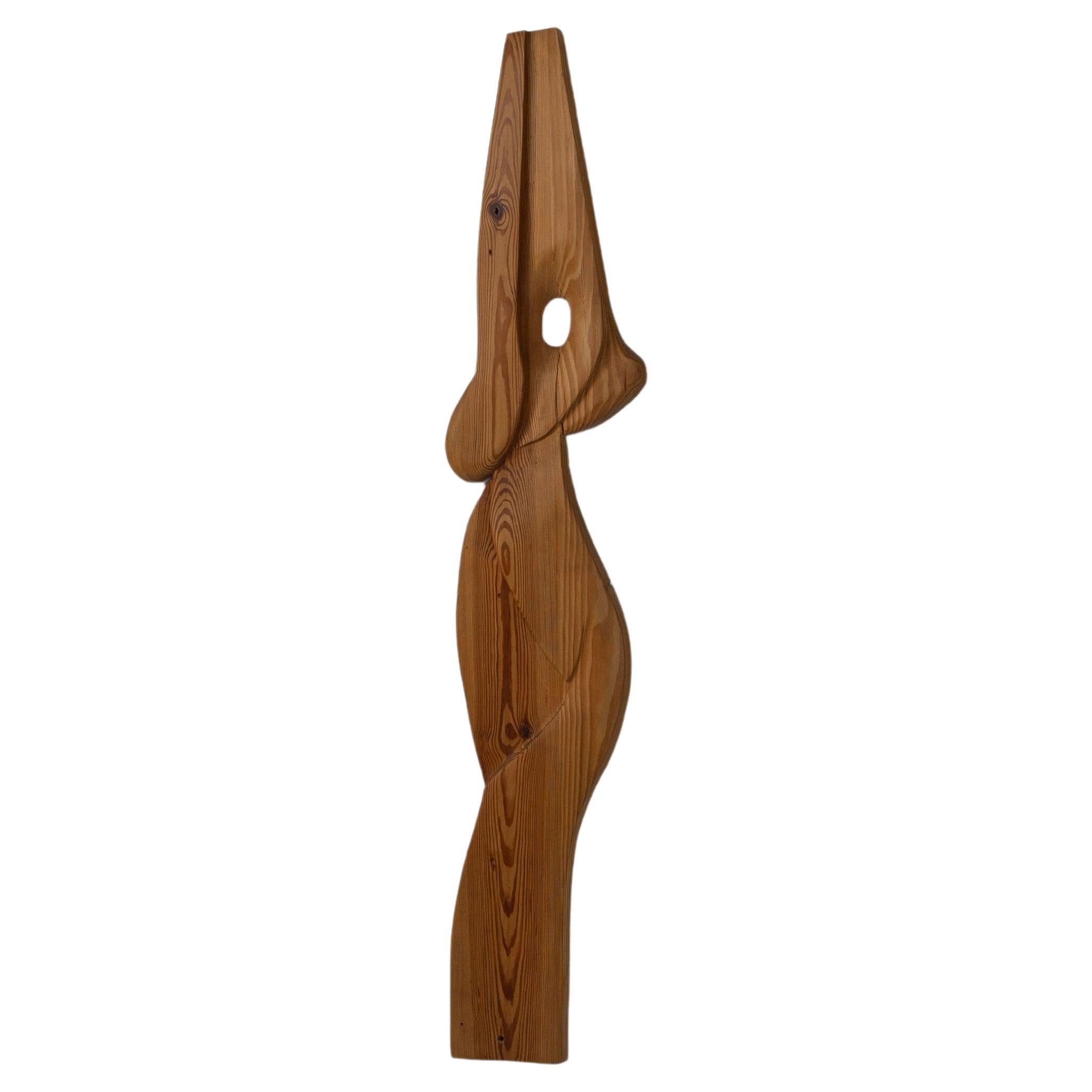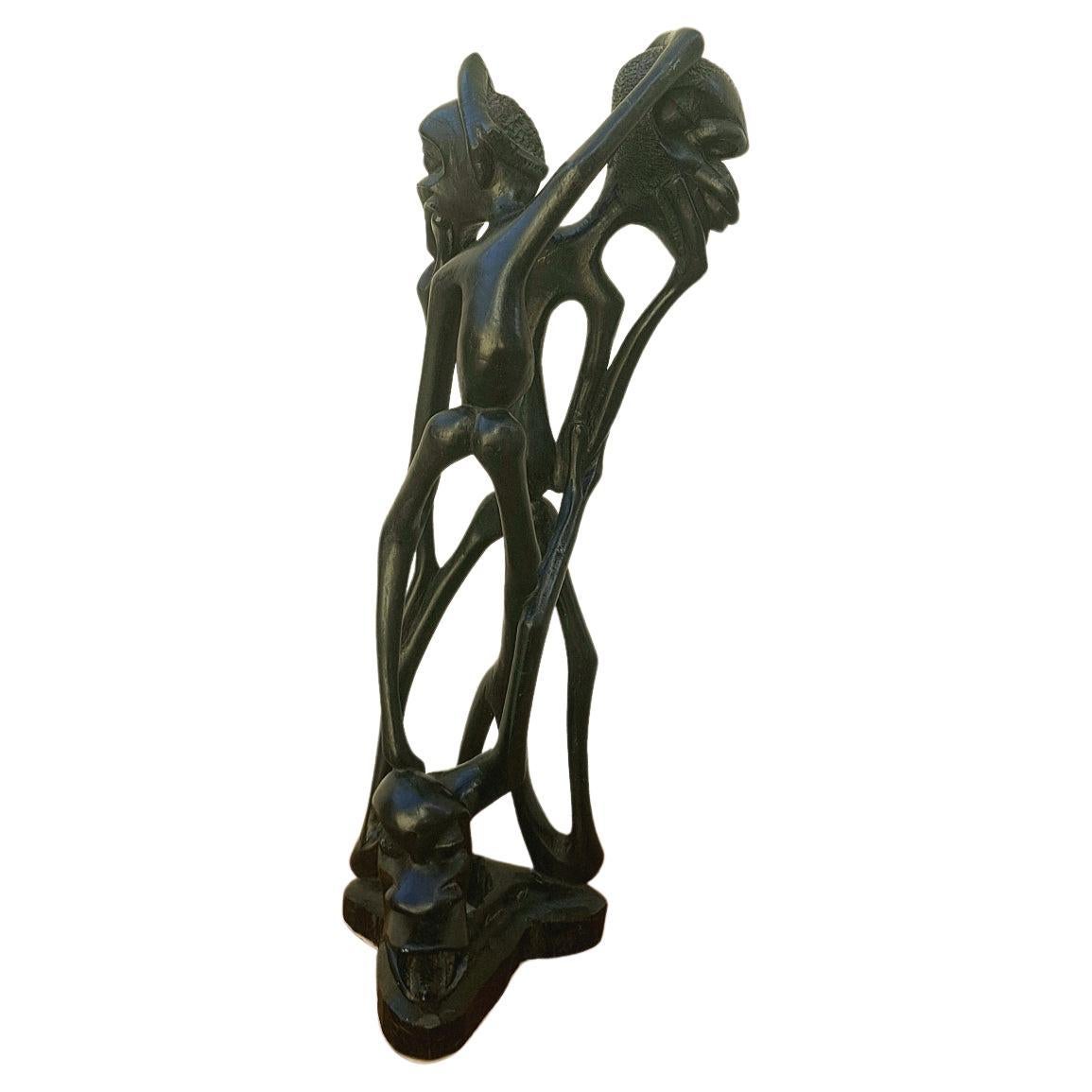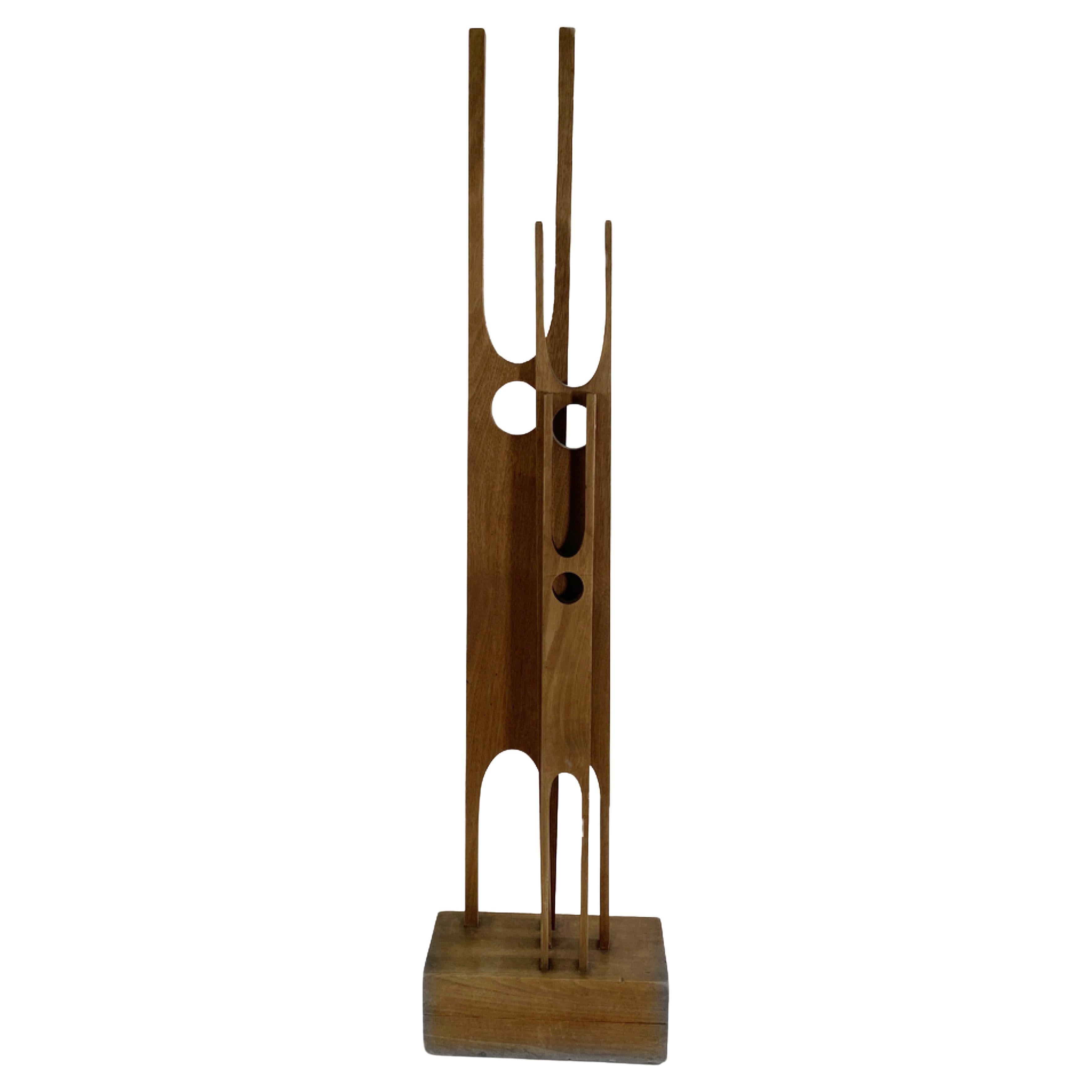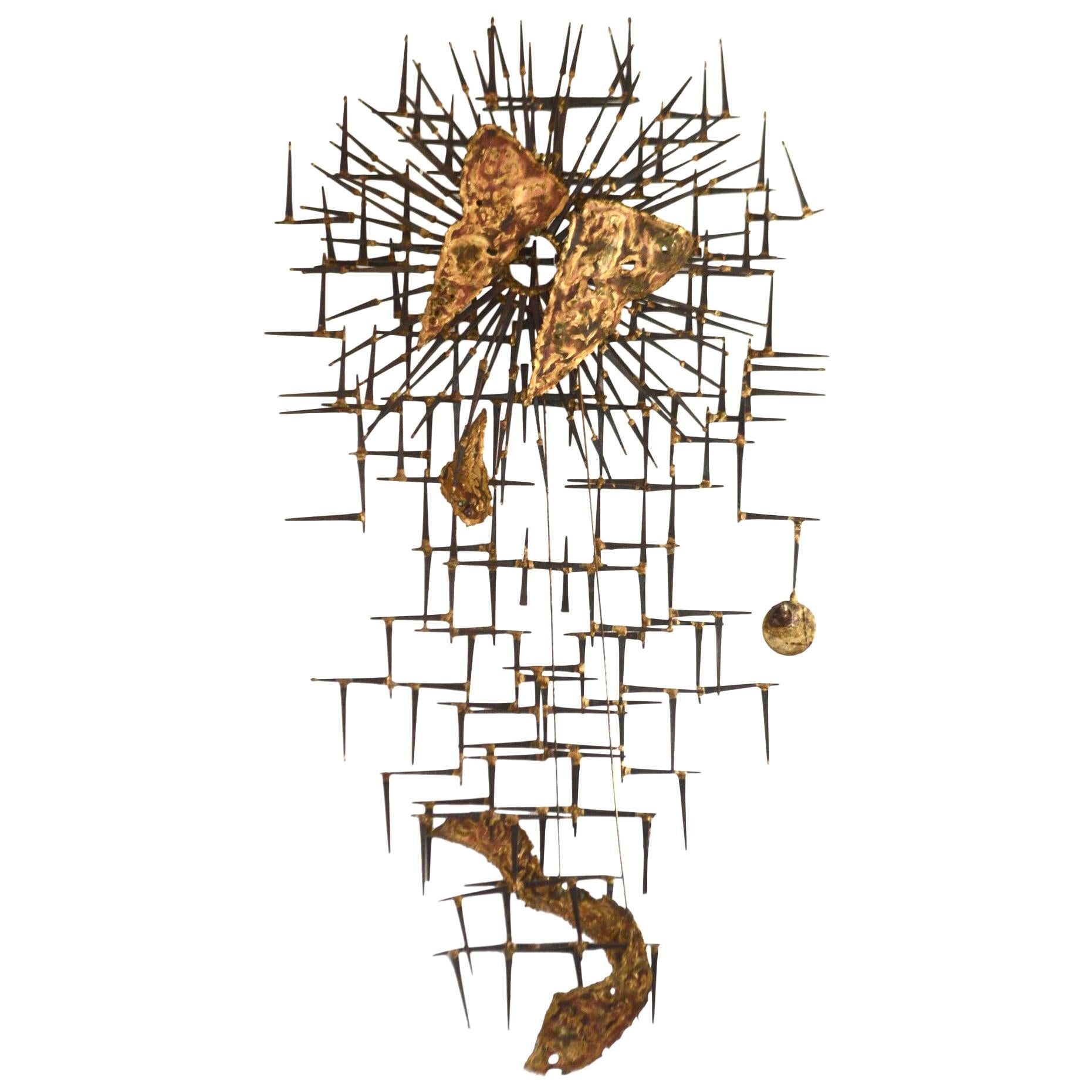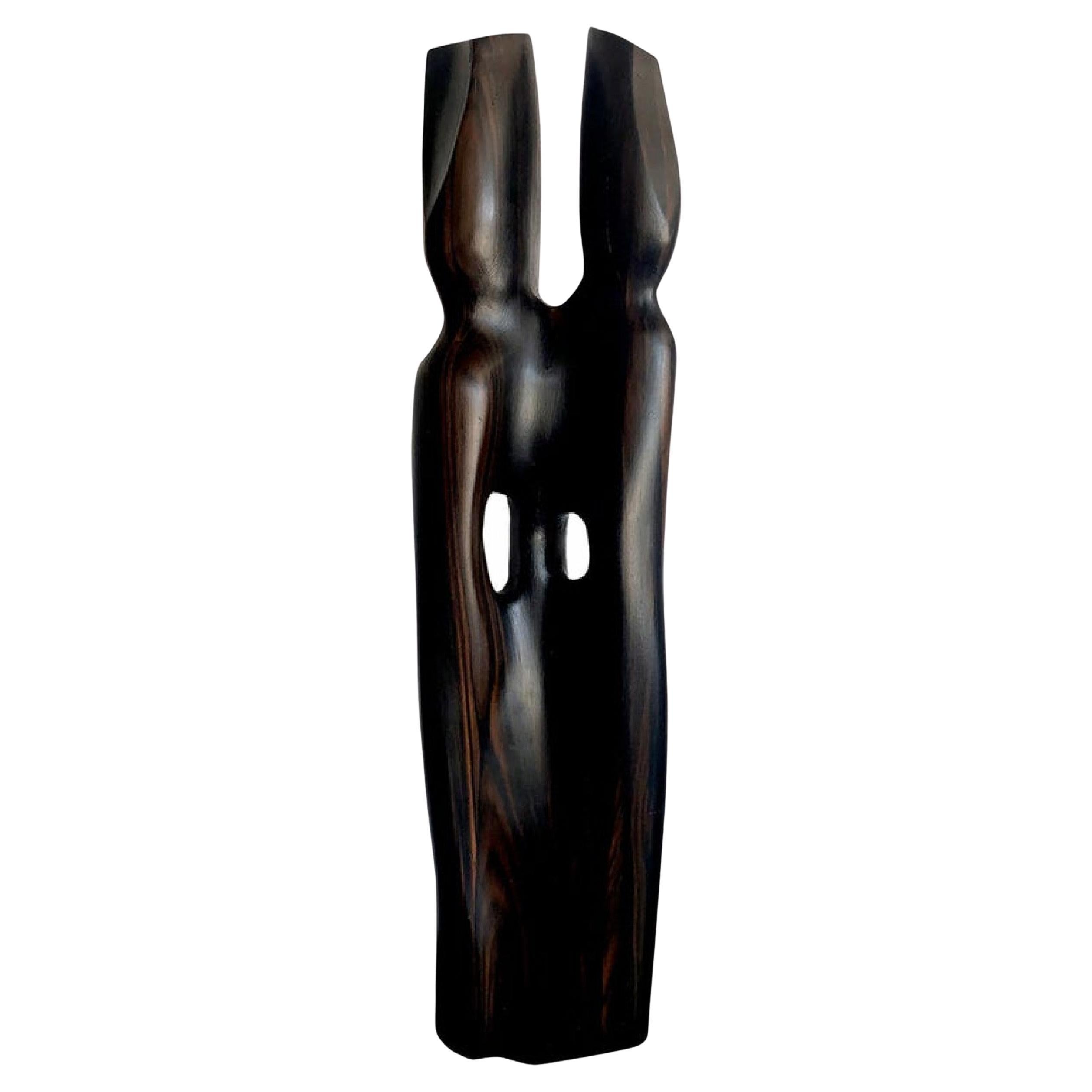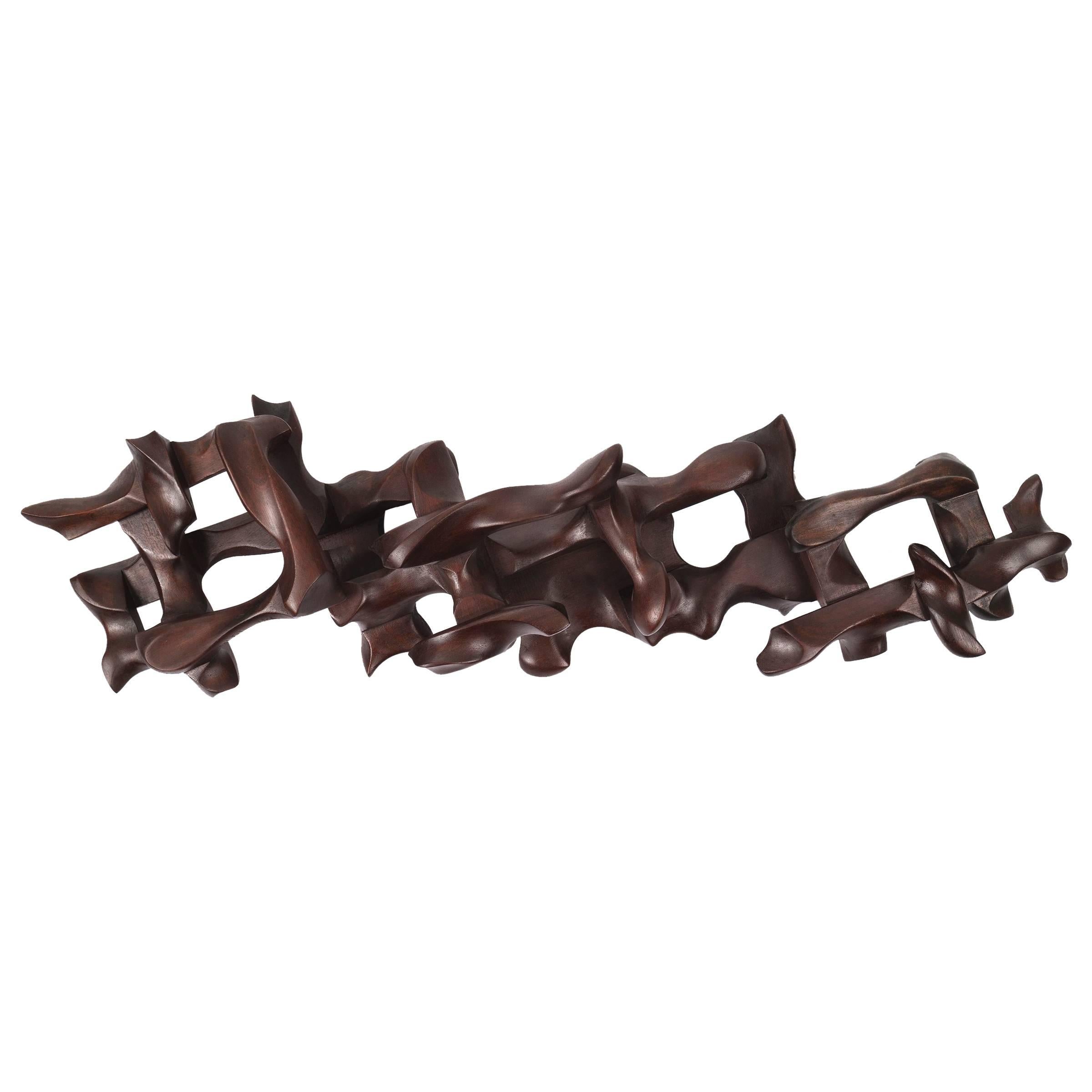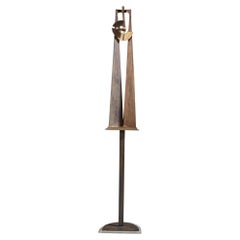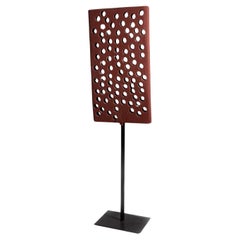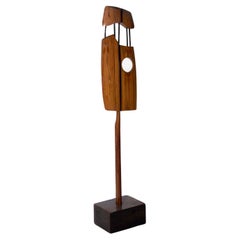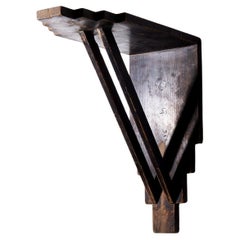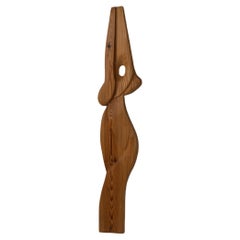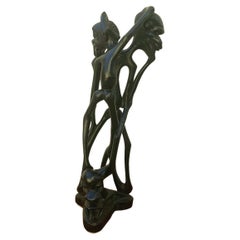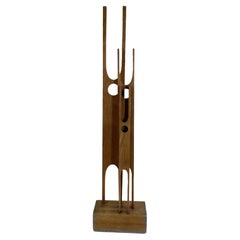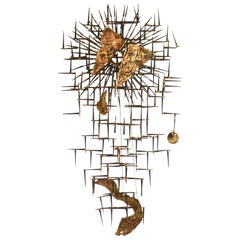Items Similar to Italian futurist wall sculpture with anthropoform
Want more images or videos?
Request additional images or videos from the seller
1 of 9
Italian futurist wall sculpture with anthropoform
$5,363.65
£3,971.60
€4,500
CA$7,375.82
A$8,202.63
CHF 4,293.70
MX$100,062.05
NOK 53,951.85
SEK 50,748.68
DKK 34,261.37
About the Item
**Futurist Sculpture: Dynamism and Movement through Wood**
In the context of Italian Futurism, an artistic movement that revolutionized art and thought in the early 20th century, sculpture is one of the fields where the search for new expressive languages is most powerfully expressed. Futurist sculpture not only breaks away from academic tradition but also strives to represent reality in motion, capturing the dynamic essence of modern life. A significant example of this exploration is a wall sculpture made of wood, which perfectly embodies the stylistic features of Futurism.
This sculptural work, entirely crafted from wood, features a series of decorative inserts that appear to "vibrate" upwards. The choice to use wood, a traditional material, in an innovative context accentuates the connection between tradition and the new Futurist approach. The decorations, shaped with broken and irregular lines, suggest the incessant movement typical of machines and modern life, themes that Futurists sought to explore in their works. The forms that rise upwards, like an ascending motion, suggest the idea of energy being released, embodying the sense of speed and continuous change.
Futurism, as an artistic movement, was intrinsically linked to the representation of dynamism and simultaneity, concepts that were developed in the Futurist manifestos, including Boccioni's manifesto of 1912, which outlined the need for sculpture to express movement and vitality in a new and original way. This wooden sculpture fits perfectly into this context, as its structure and decorations almost seem to "come to life," suggesting an ongoing transformation in space. The broken lines and forms in motion embody Boccioni's principle of "the interpenetration of planes," which he explored both theoretically and practically in his works, and which finds a plastic expression in wood here.
"The price listed is the final price. Any duties or customs charges are already included and remain entirely our responsibility, so you will not incur any additional costs. Shipping separately to be agreed upon. "Futurist sculpture does not simply aim to represent a static object, but seeks to involve the observer in a sensory experience that expresses the ceaseless change of modernity. Dynamism and movement are not just themes; they become essences that permeate the very material of the work. In this sense, the inclusion of wood decorations that "vibrate" upwards is not merely a stylistic choice but a declaration of intent: a sculpture that challenges traditional static representation and embraces fluidity and speed, key themes of Futurism.
This work, therefore, is not only an example of sculpture but also a visual manifesto of the principles that guide the Futurist movement-an invitation to see the world through the eyes of those who perceive modernity as a continuous, vibrant, and electrifying process of transformation.
- Dimensions:Height: 82.68 in (210 cm)Width: 16.93 in (43 cm)Depth: 3.55 in (9 cm)
- Style:Futurist (Of the Period)
- Materials and Techniques:
- Place of Origin:
- Period:
- Date of Manufacture:1920
- Condition:Wear consistent with age and use. In original condition , wear and tear compatible with its age.
- Seller Location:Milano, IT
- Reference Number:1stDibs: LU4911244027952
About the Seller
4.8
Platinum Seller
Premium sellers with a 4.7+ rating and 24-hour response times
Established in 2010
1stDibs seller since 2019
411 sales on 1stDibs
Typical response time: 6 hours
- ShippingRetrieving quote...Shipping from: milano, Italy
- Return Policy
Authenticity Guarantee
In the unlikely event there’s an issue with an item’s authenticity, contact us within 1 year for a full refund. DetailsMoney-Back Guarantee
If your item is not as described, is damaged in transit, or does not arrive, contact us within 7 days for a full refund. Details24-Hour Cancellation
You have a 24-hour grace period in which to reconsider your purchase, with no questions asked.Vetted Professional Sellers
Our world-class sellers must adhere to strict standards for service and quality, maintaining the integrity of our listings.Price-Match Guarantee
If you find that a seller listed the same item for a lower price elsewhere, we’ll match it.Trusted Global Delivery
Our best-in-class carrier network provides specialized shipping options worldwide, including custom delivery.More From This Seller
View AllImportant Italian Bronze Sculpture by Nado Canuti, Untitled
Located in Milano, IT
Eccentric and rare bronze sculpture by Italian master Nado Canuti from the 1950s. The sculpture is called: Untitled. Made entirely of bronze with a glass base.
The sculpture is a per...
Category
Vintage 1950s Italian Mid-Century Modern Abstract Sculptures
Materials
Bronze
Wood and metal sculpture by Aldo Guarnieri
Located in Milano, IT
This sculpture, created in the 1990s by the Mantuan artist Aldo Guarnieri, captures the spirit of the avant-garde art of its time. With his mixed technique on wood, Guarnieri manages...
Category
1990s Italian Post-Modern Abstract Sculptures
Materials
Metal
Elvio Becheroni Abstract wooden sculpture: Title Totem
By Elvio Becheroni
Located in Milano, IT
Elvio Becheroni's "Totem," born from the heart of the Amazon, testifies to the delicate dance between man and nature. In 1988, he created a masterpiece, not simply carved from the noble PAU Brasil...
Category
Vintage 1980s Italian Post-Modern Abstract Sculptures
Materials
Wood
$11,442 Sale Price
20% Off
Futurist Shelf from Italian Craftmanship
Located in Milano, IT
This Futurist wall console from the 1920s, crafted in Italy, perfectly embodies the bold and innovative spirit of the Futurist movement. Made from dark wood, its sharp, geometric lin...
Category
Vintage 1920s Italian Futurist Shelves and Wall Cabinets
Materials
Wood, Nutwood
The tree of seven possibilities from Elvio Becheroni's Amazonia series
By Elvio Becheroni
Located in Milano, IT
**The Tree of Seven Possibilities** by Elvio Becheroni is an extraordinary and unique sculpture, part of the renowned series "Amazonia - Disenchanted Forest" created in 1992. This pi...
Category
1990s Brazilian Post-Modern Abstract Sculptures
Materials
Wood
Abstract Wood Sculpture by Aldo Guarnieri
Located in Milano, IT
This sculpture by Aldo Guarnieri, created in the 1990s, speaks with the strength of the material and the delicacy of form. Crafted from wood, its surface resembles a mosaic of interw...
Category
1990s Italian Post-Modern Abstract Sculptures
Materials
Metal
You May Also Like
Abstract modern wall sculpture Romoh France 1973
Located in Roosendaal, Noord Brabant
Beautiful organic shaped wall sculpture made by unknown artist in France, 1973. The stamp on the bottom says Romoh 73. The solid pine wood has a nice pattern This sculpture has a uni...
Category
Vintage 1970s French Mid-Century Modern Decorative Art
Materials
Pine
Italian Mid Century Sculpture Student Work
Located in Los Angeles, CA
Abstract sculpture in Ebony wood by the student at Accademia di Belle Arte Venezia.
Category
Vintage 1960s Italian Mid-Century Modern Abstract Sculptures
Materials
Wood, Ebony
Modern Hand Carved Wood Sculpture
Located in Queens, NY
Modern Hand Carved Wood Sculpture
Category
20th Century Unknown Modern Abstract Sculptures
Materials
Wood
Midcentury Brutalist Wall Sculpture
By Curtis Jeré
Located in Houston, TX
A vintage mixed metal Brutalist wall sculpture.
Category
20th Century Mid-Century Modern Wall-mounted Sculptures
Materials
Metal
Vintage Abstract Sculpture of Two Combined Figures
Located in Queens, NY
Vintage abstract sculpture of two combined figures.
Category
20th Century Mid-Century Modern Abstract Sculptures
Mario Dal Fabbro Sculpture
By Mario Dal Fabbro
Located in Chicago, IL
Mario Dal Fabbro - No. 20
Signed Mario Dal Fabbro
Multi-disciplinary artist Mario Dal Fabbro was born in Cappella Maggiore, Italy in 1913. He trained in his family's furniture design shop prior to attending both the R. Superior Institute for Decorative and Industrial Arts in Venice as well as Magistero Artistico, graduating with high honors in 1937.
From the years of 1938-1948 Dal Fabbro immersed himself in furniture design and academia. Primarily, he designed furniture for both design houses and private clients. Del Fabbro participated in the Triennale de Milano competition in both 1939 and 1947 and won the Ganzatti Contest for 'Standardization of Furniture". During this period he also contributed to the Italian design publications Domus and Stile and the French magazine L'Architecture D'Aujourd'hui.
In 1948 Mario Dal Fabbro immigrated to America and began designing furniture for mass production, working for J.G. Furniture in New York and Quakertown, PA. During his years steady employ, he published Modern Furniture: Its Design And Construction in 1949 and contributed regularly to The New York Times and House and Garden. His subsequent publications spanned a little over the decade and included How to Build Modern Furniture (1951), How to Make Built-In Furniture (1955), and How to Make Children's Furniture and Play Equipment...
Category
20th Century American Mid-Century Modern Abstract Sculptures
Materials
Wood
$13,440
